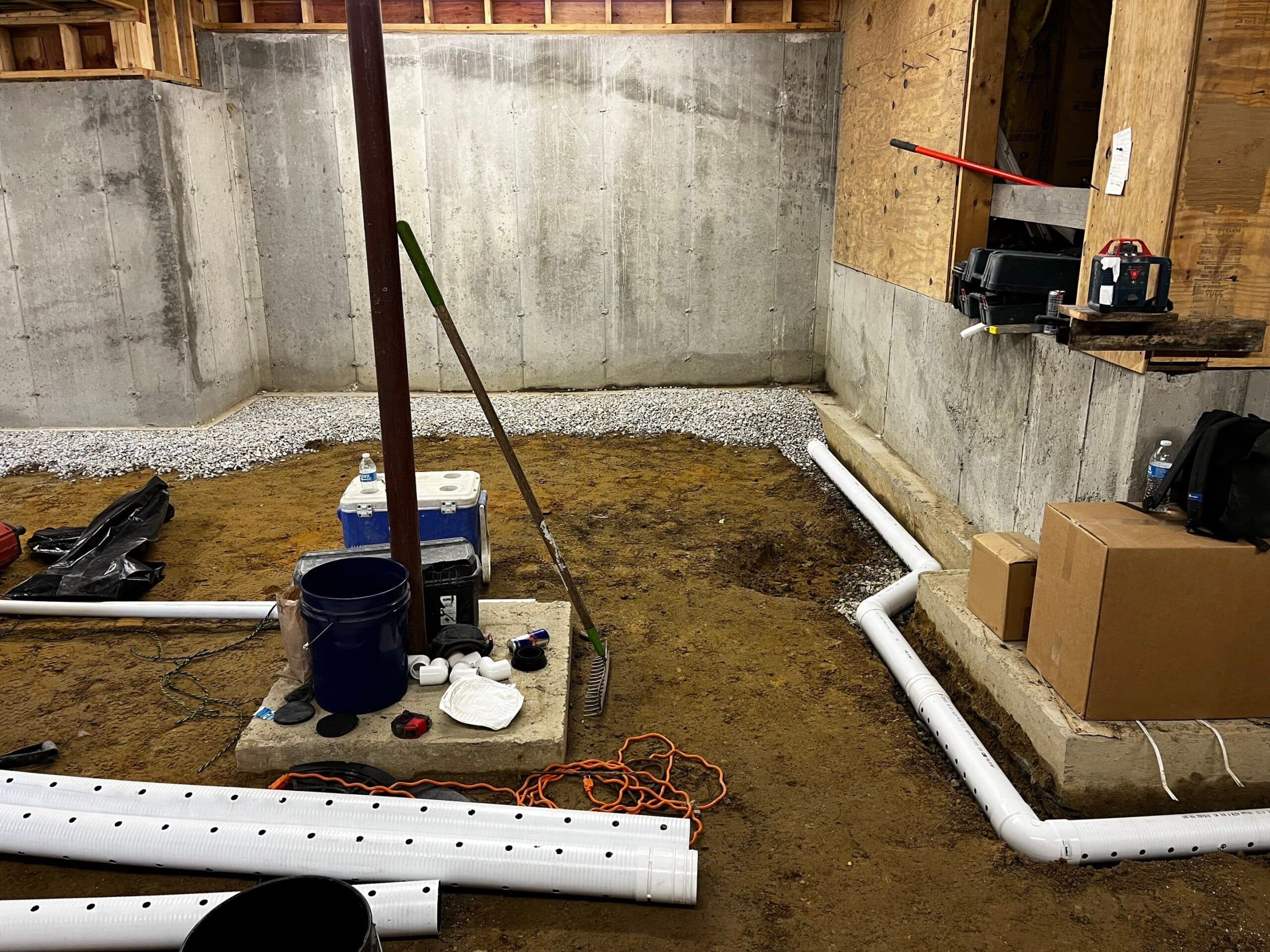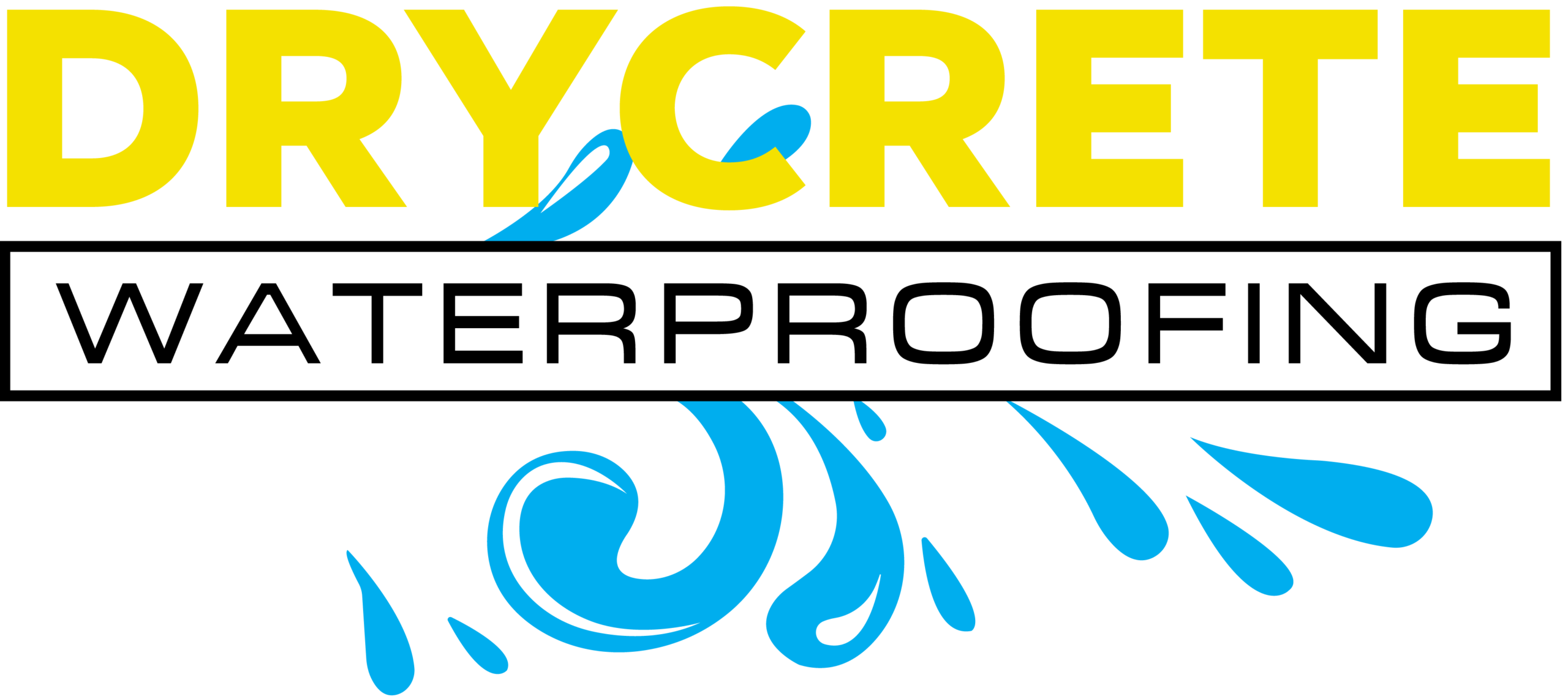If you go down to the basement and notice a crack in the floor, panic might be a natural response. If that crack is leaking water, that reaction is even more understandable. Before you start worrying, it’s worth mentioning that many cracks in basement floors are normal. Some may not even need repairs for anything but aesthetic purposes. That being said, some basement floor cracks are an issue and can allow water and dangerous gases into your home.
Understanding Basement Floor Cracks
There are numerous causes for cracks appearing in basement floors and some the most common are benign. The trick is judging which are normal and harmless and which require some form of intervention. Let’s take a look:
Hairline Cracks
Small, thin, spidery cracks across your basement floor are known as ‘hairline cracks’. They’re generally nothing to worry about unless they’re getting wider over time. Hairline cracks are usually caused by the concrete of your basement floor shrinking as it dries. This can happen up to a year after it was poured. So long as they’re under 1/8th of an inch wide and dry, you can usually safely ignore them.
Flaking or Spiraling Cracks
While they’re certainly unsightly, they’re usually nothing to worry about. These are caused by too much water in the concrete mix used to pour your floor or when it hasn’t cured properly. If it’s bothering you, you can install a floor over it.
Settlement Cracks
After your home is built it takes a while to ‘settle’ into its foundations. This can lead to shrinkage or expansion, larger cracks and uneven floors. Depending on how bad these may be, you may need to consider having the floor lifted and re-levelled.
Heaving Cracks
Heaving cracks in a basement floor are caused by the soil beneath pushing up. They’re particularly common in clay-soiled areas as the ground becomes waterlogged or freezes. These should be addressed and can lead to water leakage and worsening of concrete slab cracking.
Sinking Cracks
A sinking crack is the opposite of a heaving crack and suggests something has moved below your floor. This might be caused by soil erosion, a rotting tree root collapsing or something even more serious like a sinkhole forming. Whatever the cause, it’s a major concern and needs investigating.
Normal Vs Problematic Cracks
A good rule of thumb is that a dry crack that’s less than 1/8th of an inch wide is nothing to worry about. If it is growing, heaving, sinking or any cracks in a basement floor which are leaking water It needs rectifying.
Assessing Your Basement Slab
If you’re worried about cracks in a basement floor, the first step is to assess your slab. There are two typical installation types here:
- A good slab: A good slab is properly prepped with 6 to 8 inches of crushed stone to encourage proper drainage, a vapor barrier to prevent wicking, and a 4-inch-thick concrete pour over top.
- A Rat Slab: A rat slab, also called a mud slab, is a very thin layer of concrete poured directly over subgrade material. They’re usually poorly finished and their purpose is to seal the floor rather than provide a usable space. They’re most common in crawlspaces but you will find them fairly commonly in New England basements.
It’s important to note that somewhere between when they were pouring rat slabs in basements and when it became standard practice to use crushed stone and vapor barrier (around the 1970’s) there were 4-inch-thick slabs that were poured directly over subgrade material or crushed stone without vapor barrier. These are middle of the road slabs. The thickness of concrete leads to a level finish, but the lack of vapor barrier and proper subgrade material can lead to wicking and cracking in your concrete slab.
A good slab is designed to create a conditioned living space for your basement. It prevents water vapors and seepage from occurring, and if done properly, should prevent serious cracking such as heaving.
Of course, quality of mix matters too. A mix that’s too wet or too dry when pouring the floor will result in cracks in your foundation floor. Cracks in your basement floor can lead to water getting in, and in turn, damage your property or make your home less healthy.
Signs of Slab Failure
While many basement floor cracks are harmless, it’s worth keeping an eye on them to insure they stay that way. Things to look out for include:
- Widening Cracks
- Newly Uneven flooring
- Extensive cracking
- Water seepage or leaking
If you’re worried about any of these, it’s best to consult a professional, though there are DIY options for smaller repairs.
Cosmetic Fixes
If you’re looking to make your basement floor look a whole lot better or to deal with an immediate problem, you’ve got a range of options. Some will require the intervention of a professional, others you can do yourself.
DIY Fixes
In terms of jobs you can do yourself, you’ve got options. For minor repairs, temporary fixes and to clean up the place, any hardware store will have a selection of products.
Jobs you can tackle yourself include:
- Sealants
- Concrete Patches
- Epoxy Injections
For any one of these, simply follow the instructions on the packaging.
Of course, simply blocking up a crack with epoxy or slathering more concrete over it won’t solve the underlying causes. If cracks have formed due to structural issues or hydrostatic pressure, it’s likely that they’ll happen again over time.
Professional Interventions
Of course, sometimes the DIY quick-fix won’t do it and you need to enlist the support of a professional. For basement floor cracks which seem like they are more than just cosmetic, they have a range of options.
Professional intervention may involve drilling out around the cracks and filling, resurfacing or any one of a number of processes. As a general rule, professional work should last longer than DIY but ultimately, treating the symptoms is a temporary solution.
The Ultimate Solution
For serious issues, it may be a case of ripping it out and starting again. While this may seem drastic, sometimes a fresh start is the only way to fix serious underlying issues. Replacing a basement slab is a big, disruptive job, but in some circumstances, it’s the best option.
When Is Replacement Necessary

Eventually, even concrete becomes too damaged to patch. If your basement floor is heaving, sinking or cracking excessively that can all suggest it’s time for radical action.
If you have a rat slab in your basement and want to use the space for any from of dry activities such as dry storage, living space, a workshop, a gym, etc. you’ll need to replace your slab to attain that.
While a new slab will be expensive and fairly disruptive, it provides a lot of benefits in the long-term. With a newly poured floor, your basement can be transformed from a dank pit to a livable space. It also provides the opportunity to deal with any issues which may have caused heaving or sinking cracks in your foundation floor.
The Replacement Process
The process for replacing your basement slab goes something like this:
- Clear your basement. Doing this before the professionals get there can save you money. Time spent moving boxes is time not spent pouring concrete.
- They will then remove old concrete. Jackhammers will break up your current cracked foundation floors and the rubble will be removed. Then the sub grade material will be dug down and removed.
- This is a good time to replace any old and possibly corroded plumbing pipes that you have under your floor.
- Drain installations. While carrying out serious work, it’s a good idea to take any other waterproofing steps at the same time. At Drycrete we install a French drain and sump pump system with every slab replacement we complete.
- The next step is to lay down 2 inches or more of crushed stone and install a vapor barrier over top. Vapor barriers will help protect your new floor from rising water.
- Concrete will be poured. This will form the surface of your new basement floor.







Slab replacements are a laborious project and could cost anywhere between $20,000 to $40,000 depending on the specifics. That being said, it can have a huge impact on your quality of life by adding more usable space to your home.
The Benefits of a Slab Replacement
The obvious benefit of a slab replacement is fixing those annoying cracks in your basement floor and preventing moisture and water intrusion in your home. However, it’s important to also consider the value a new slab can add. Properly conditioned and waterproofed basements can add up to 25% to your home’s value.
A new slab can completely transform your basement and give you the opportunity to finish the space. Finishing your basement will add more liveable square footage, and in turn, give you more money when it comes time to appraise and sell your home.
Choosing The Right Solution
When dealing with basement floor cracks, you have to weigh out the pros and cons for yourself. Sometimes a slab replacement is the only viable option.
Ultimately, whether to repair or replace is up to you but consulting with a professional is never a bad plan. They will be able to tell you what your options are and the pros and cons of each. They’ll ask you to consider cost, longevity, added value, disruption and all the other factors. Some things they may mention include:
- A full replacement is expensive, but could last 100 years under good conditions. It’s also disruptive and messy, but could result in a new functional space in your home. The upfront cost is considerable, but so is the value it brings.
- On the other-hand, cheaper options exist. They won’t last nearly as long or deal with underlying problems, but they could be enough for now. If the basement floor cracks are relatively minor, it probably makes sense to patch or fill, or do nothing at all rather than replace.
When dealing with a basement floor crack, or worse a crack in your basement floor leaking water don’t panic. You have options.

